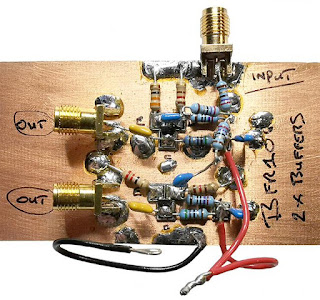Digital VFO & RF Oscillator Module
"For The G6LBQ Irwell HF Transceiver"
Welcome
to part 2 of my blog post series in which I present further details of my
Digital VFO and RF oscillator module for the “Irwell HF Transceiver project”.
This is a significant building block as it will be solely responsible for
frequency generation and the control of other modules in the project.
Since I
posted part 1 on the blog I have made good progress with the software changes that
I outlined. I have added additional commands to JA2GQP’s source code for the
I2C Multiplexer and I am now at the stage where I can communicate with two
SI5351 devices to produce two chip independent clock signals. In order to achieve this, I have had to make
changes to both the main code as well as the SI5351 library file.
For
now, I only need to generate two clock signals for my transceiver, one for the
VFO and the other for the BFO, this will permit the radio to run as a single
conversion superhet in its current state. Once further modules are developed
the receiver will be upgraded to a dual conversion superhet which will require a third
clock signal for the conversion oscillator.
The
additional software code required to support a third SI5351 is going to be a
bit more difficult for me to implement, I hope to replicate JA2GQP’s BFO
oscillator code parts for this as it includes a routine for calibrating the BFO
frequency and saving it to memory and If I can do this it should pave the way
for implementing an IF shift control.














